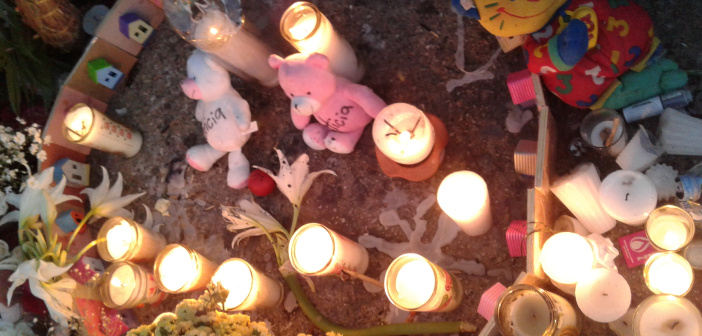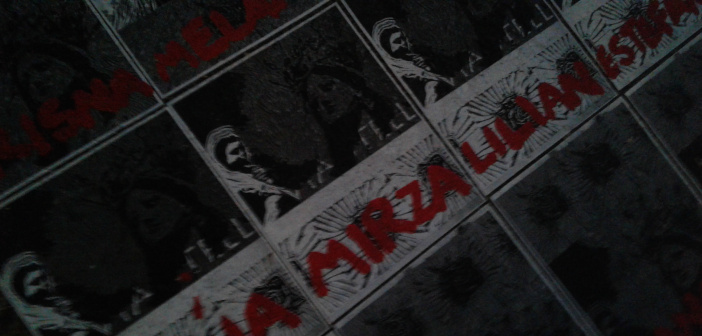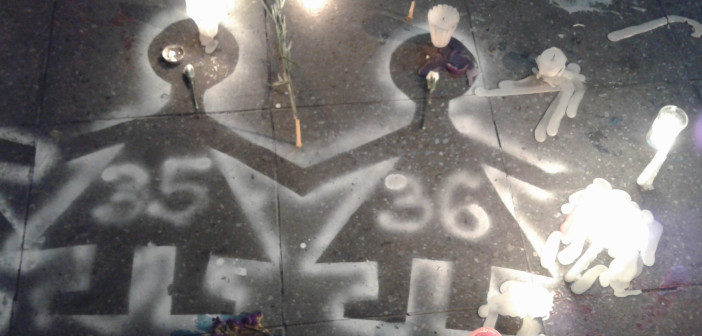Innocence Turned to Ashes in Guatemala Children’s Home Fire
In the early hours of the morning on March 8th, International Women’s Day, when women all over the world were marching for sexual and reproductive rights and an end to gender based violence, 52 Guatemalan girls, residents of a state children’s home, were locked in a classroom in which a fire broke out. Their pleas for assistance were ignored by the police officers who were guarding them.
They were orphans, girls from poor families whom the state had deemed incapable of caring for them, girls who had suffered sexual abuse or sexual exploitation, as well as victims of child trafficking. They were 13, 14, 15 and 16 years old. At least 9 of them were pregnant. As I write, 43 have now died, either burning to death instantly during the fire, or over the previous week as a result of the severity of their injuries. The rest are in critical condition in hospital.
Many of the bodies have yet to be identified and their mothers, fathers, grandmothers, aunts, sisters and brothers have been camped at Guatemala’s two public hospitals and at the forensic laboratory desperately waiting for news of their girls. The nearly 800 other residents of the home have been relocated to temporary shelter across Guatemala city.

It is a human rights and humanitarian catastrophe. Perhaps the worst massacre of its kind since the country’s 36 year internal armed conflict ended in 1996.
Failures and abuse
Hogar Seguro de la Virgen de Asuncion, (The Virgin of the Assumption Safe Home), the site of the blaze, is a state residential home for children who have been abandoned by their families or whom the State has taken into custody for ‘their own good.’ It has the capacity to house up to 500 children but when Wednesday’s events occurred it was housing more than 800 children and young people.
Children’s organisations, and more recently the residents themselves, have been denouncing the inhuman conditions in the home for years. There is overcrowding. The food is scarce and full of worms. The hundreds of children with intellectual and physical disabilities in the home do not recieve adequate care. There are epidemic levels of physical and sexual abuse. There are suspicions of links to a human traifficking ring.
The girls trapped in the blaze had begun to speak out about the sexual harrassment, physical abuse and rape they were experiencing on a daily basis at the hands of those who were supposed to be looking after them as well as the older male residents.

On Tuesday the 7th of March a riot broke out among the residents of the home; children and teenagers who could no longer stand living under the regime of abuse and tyranny. There was an attempted escape on Tuesday night which served as the pretext for locking the 52 girls in one of the classrooms that night. Early on Wednesday morning the fire fighters were called to evacuate the home. When they arrived the blaze was already well underway and they were not allowed immediate entry. The police that had been in situ from the night before were keeping strict control over who was allowed to enter and leave. Parents and relatives of the residents arrived demanding to be let in to see if their children were alive. Their desperate pleas were also ignored.
Eventually the rescue services were granted entry and a stream of ambulances left carrying up to six injured and traumatized young girls to the nearest public hospital in the city centre, nearly 20 kilometers away.
A global and institutional problem
This time last week I was writing about Ireland’s own regime of sexual repression and the punishing of the poor in Irish catholic institutions. The imprisonment of thousands of women in Magdalene Laundries and Mother and Baby homes and the abuse, trafficking and deaths of thousands more Irish children is now well documented. The horrific story of the Tuam Babies has made headlines all over the world, evidencing our State’s deep disregard for the most vulnerable in Irish society. Reading about the conditions in Hogar Seguro Virgen de la Asunción in Guatemala that led to the massacre was like reading about the conditions in the Tuam Mother and Baby Home: the neglect, the violence and the sexual abuse, where children were treated worse than animals.
Thankfully things in Ireland are changing, as women and survivors of the mother and baby homes are speaking out. Irish women marched in record numbers on International Women’s day to demand full bodily autonomy and sexual and reproductive rights, the final piece in addressing Ireland’s long legacy of institutional misogyny.
In Guatemala there have been nightly vigils since Wednesday and on Saturday the 11th the main square filled up with heartbroken but indignant citizens demanding justice for the 43 girls. Among the tears and the rage were calls for an end to the horrific levels of gender based violence, racism and discrimination which plague Guatemala. It is one of the most dangerous places in the world to be a woman, with two violent deaths of women per day. Indigenous women, rural women and poor women bear the overwhelming burden of sexism in a country where often it is considered acceptable, and even expected, to beat your wife and children.

There were calls for the president’s resignation, State accountability and justice to be done to those responsible. It is still unclear what exactly happened and the full truth may never come out. What seems clear is that in desperation one of the girls set fire to one of the matresses they had been given to sleep on and it quickly spread through the classroom. The girls called for help but their pleas were ignored. Other residents tried to help them but they were blocked from doing so. By the time the fire fighters were able to reach them, 19 had already died.
The Inter-American Commission on Human Rights released a statement on Monday the 13th of March calling for a full investigation into the circumstances surrounding the fire and for precautionary measures to protect the surviving children. It also called for an end to the mass insitutionalisation of children across Latin America. Solidarity Vigils have been held at Guatemalan Embassies in Argentina, El Salvador, México and Ecuador. More are planned for the coming week.
It is a bitter irony that International Women’s Day was born out of the garment workers strike in the early 1900s. On the 25th of March 1911, 146 garment workers, mostly young migrant women, died in the Triangle Shirtwaist Factory fire in Chicago. They were unable to escape because they had been locked in to prevent them from stealing or taking breaks. 96 years later history repeated itself, this time to silence young girls who were beginning to speak out about a regime of sexual and physical abuse and rape.
Featured images via Aisling Walsh.
